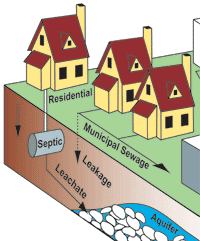
Photo from wikipedia
Phthalates are well-known emerging contaminants that harm human health and the environment. Therefore, this review aims to discuss about the occurrence, fate, and phthalates concentration in the various environmental matrices… Click to show full abstract
Phthalates are well-known emerging contaminants that harm human health and the environment. Therefore, this review aims to discuss about the occurrence, fate, and phthalates concentration in the various environmental matrices (e.g., aquatic, sediment, soil, and sewage sludge). Hence, it is necessary to treat sources containing phthalates before discharging them to aqueous environment. Various advanced wastewater treatments including adsorption process (e.g., biochar, activated carbon), advanced oxidation processes (e.g., photo-fenton, ozonation, photocatalysis), and biological treatment (membrane bioreactor) have been successfully to address this issue with high removal efficiencies (70 - 95%). Also, the degradation mechanism was discussed to provide a comprehensive understanding of the phthalate removal for the reader. Additionally, key factors that influenced the phthalates removal efficiency of these technologies were identified and summarized with a view towards pilot-scale and industrial applications.
Journal Title: Bioresource technology
Year Published: 2021
Link to full text (if available)
Share on Social Media: Sign Up to like & get
recommendations!